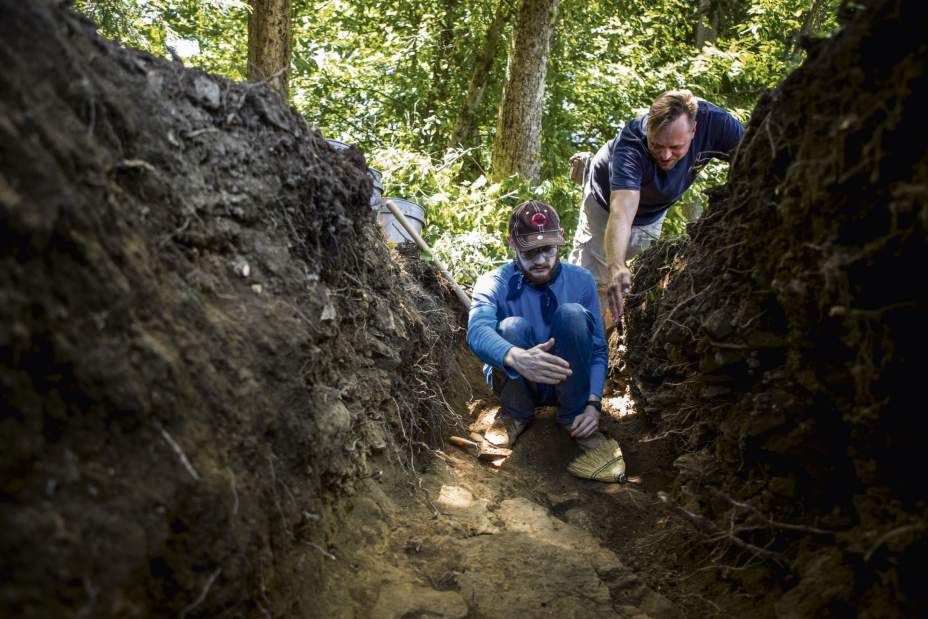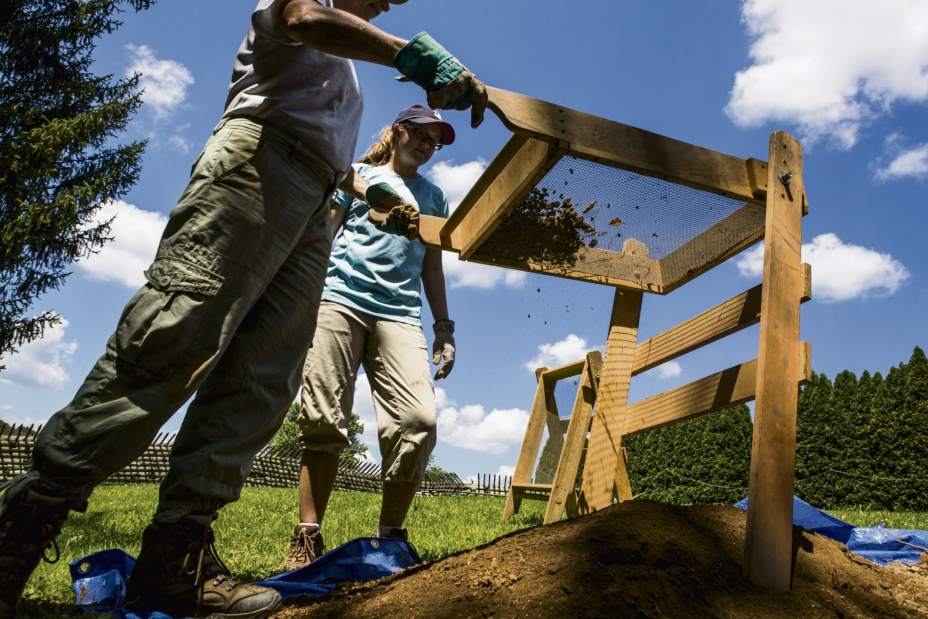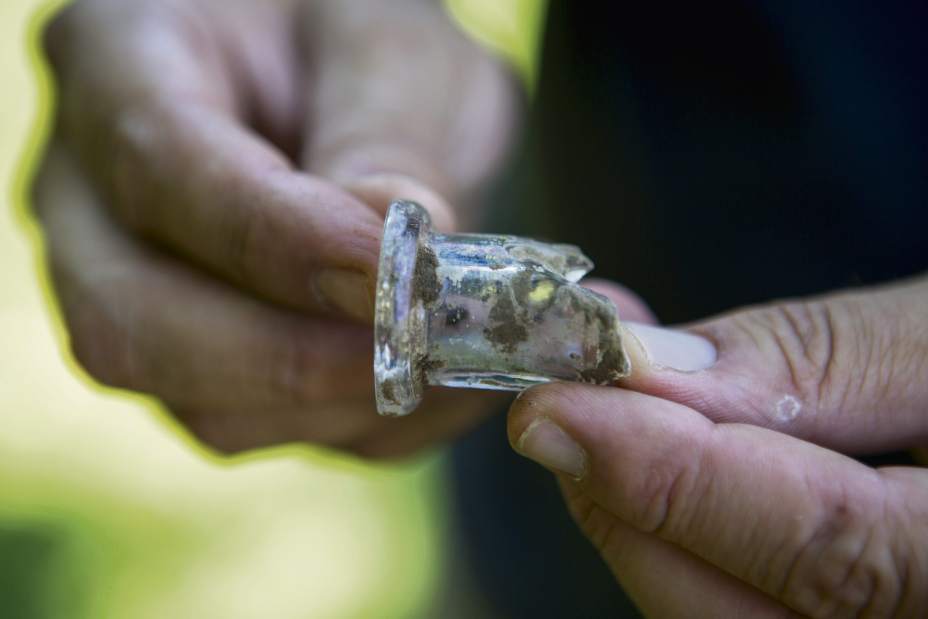Archaeological dig lays groundwork for Fort Ligonier expansion
Fort Ligonier could gain another layer of defenses at its eastern end, and a group of college students is helping to lay the groundwork for the proposed expansion.
Jonathan Burns, director of Juniata College's Cultural Resources Institute, is directing three students, additional fort interns and volunteers in an archaeological dig meant to document the location of an artillery battery that once protected the outer retrenchments at the eastern end of the 18th-century British fort.
“There's been a lot of modern disturbance, but we should find some remnants,” Burns said of the battery at the southeastern corner. The fort was key to British victory in the French and Indian War and has been gradually reconstructed as a historic site.
Period maps and drawings indicate the location of the eastern battery, which likely would have included a wooden plank deck for artillery pieces and earthen mounds reinforced by bound bundles of sticks, or fascines.
In an initial dig last summer, Burns' team uncovered post holes he believes correspond to a zig-zagging palisade wall, or “line of communication,” that would have connected the artillery battery to the fort. This summer, in a two-week session that ends Thursday, the group is hoping to hone in on the battery's position so that the fort's restorationist, Brad Mooney, can follow through with a plan for reconstructing it.
“We know we're within 50 to 100 feet of it,” Burns said.
During the first few days of this dig, the group pulled several artifacts from excavated trenches — including a lead musket ball, clay pipe stems, a clay marble and three fragments of an iron shovel head that resembles another period implement uncovered at the fort in the 1960s.
James Kelleher, a student at Hampshire College in Amherst, Mass., spotted the shovel on the first day.
“It was the first object I found. Also, in the span of 15 minutes, we found the head of a spoon that looked like it was made of iron as well. It's exciting. You find all sorts of little artifacts.” But, he admitted, “I'm tired of finding shards of glass.”
Also unearthed were a glass bead, a porcelain doll's hand and a buckle that could have been on breeches or a garter.
Murrysville residents Abigail Sites, a junior anthropology major at the University of Pittsburgh, and her sister, Meredith, a senior at Franklin Regional Senior High School this fall, were encouraged to take part in the dig by their uncle, Andrew Dudash, a Juniata research librarian who has been assisting Burns.
Abigail Sites took part in the dig last summer and is assisting again this year as part of her duties as a fort intern.
“It's really cool,” Meredith Sites said of items, including some older square-headed nails, which she and other volunteers have separated from soil at the dig. “I've learned how to sift a lot of dirt.”
If she follows through with her interest in marine biology as a career, she'll continue to take part in field work, but in a much different setting.
Burns pointed out that the dig serves as a valuable experience for participating students while providing necessary archaeological services for Fort Ligonier. He noted the fort is providing funds for students to complete follow-up lab work, identifying and cataloging the recovered artifacts before they are returned to the fort for archiving and possible display.
Items found in the initial dig last summer included a copper livestock bell, the mouthpiece for a French horn and several hook-and-eye fasteners from British military uniforms.
Erica Nuckles, the fort's director of history and collections, said the artifacts Burns' team members have found appear to be “pointing us in the right direction” for pinpointing the site of the artillery battery. “I think we're in the vicinity, but we need a little more information, and that's sort of the fun of it,” she said.
She called the discovery of the shovel pieces “very promising. You had to build the fort and also maintain it. Both require a lot of shovels.”
Nuckles pointed out the fort's eastern defenses were critical because they protected the garrison's supply line from other British forts to the east.
Visitors who tour the fort in the coming week will be able to see the dig in progress. They'll also see construction under way on an $8 million improvement project that will add an education center to the fort museum by the fall of 2017.
Dudash noted about 1,000 people visited the fort during the two weeks of last year's dig.
Details: fortligonier.org.
Jeff Himler is a Tribune-Review staff writer. Reach him at 724-836-6622 or jhimler@tribweb.com.







